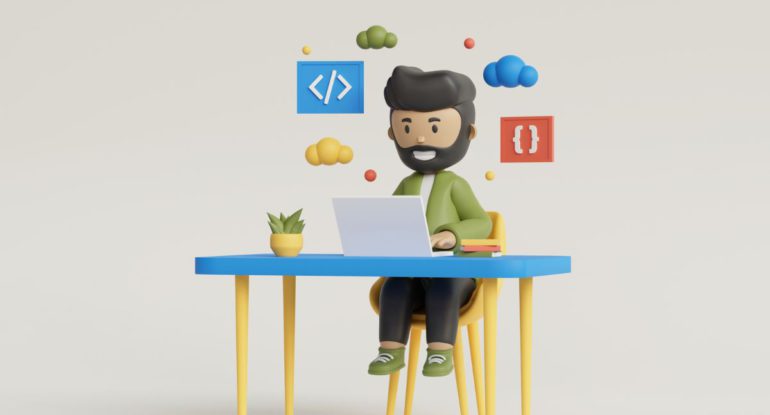Unveiling the Top 10 Web3 Gaming Trends of 2023 Based On Game7’s “State of Web3 Gaming” Report

In the rapidly evolving landscape of web3 gaming, where blockchain technology intersects with the gaming industry, Game7’s recent report, titled “State of Web3 Gaming 2023,” provides a comprehensive view of the current trends that have shaped the industry. Led by George Isichos, a Core Contributor at Game7, the report aims to offer a neutral and in-depth analysis of the web3 gaming ecosystem, prioritizing core game development over tokens and speculation.
Top 10 Web3 Gaming Trends of 2023

1. Dominance of the Asia-Pacific Region:
The report identifies the Asia-Pacific (APAC) region as a powerhouse in web3 game development, hosting 40 percent of web3 game developers. North America follows closely at 30 percent, highlighting the global reach and influence of web3 gaming.
2. Key Players in the Web3 Gaming Market:
The USA emerges as the largest market for web3 game developers, comprising 30 percent of the total. South Korea (12 percent), the UK (6 percent), Singapore (6 percent), Vietnam (4 percent), and Australia (4 percent) also stand out as significant contributors to the global web3 gaming landscape.
3. Evolution of Web3 Gaming Investments:
Despite a slowdown following the 2022 market correction, investments in blockchain gaming rebounded. By the third quarter of 2023, investments in blockchain gaming reached an impressive $1.5 billion, with over $800 million dedicated specifically to web3 gaming projects.
4. Global Funding Distribution:
US-based web3 gaming projects secured over $4 billion in funding, showcasing the substantial financial backing for innovation in the sector. Other countries such as France, Canada, Singapore, and Hong Kong also received noteworthy funding ranging from $0.66 to $0.9 billion.
5. Growth of New Blockchain Networks:
The report highlights a significant surge in blockchain networks targeting gaming, with more than 81 new networks announced in 2023. This represents a substantial 40 percent increase from the previous year, indicating the sustained interest and development in the intersection of blockchain and gaming.
6. Distribution Challenges:
Despite the growing interest, distribution remains a significant challenge for the web3 gaming stack. Over half of web3 games are currently inaccessible on mainstream distribution platforms, leading developers to rely on direct channels or web3 native platforms for distribution.
7. Support from Mainstream Platforms:
Platforms like the Epic Games store have started showing increasing support for web3 games. From featuring only two games in June 2022, the store showcased 69 web3 games by October 2023. This shift indicates a growing recognition of the potential of web3 gaming by mainstream platforms.
8. Inter-Blockchain Competition:
The report reveals a considerable migration of web3 games across different blockchain networks, sparking competition among blockchains for dominance in web3 gaming. Notable choices in 2023 include Polygon, Immutable, and Arbitrum.
9. Potential for Revolutionizing the Gaming Industry:
Web3 gaming holds immense potential to revolutionize the gaming industry. By offering players new monetization opportunities, decentralized governance, increased interoperability, and improved user experiences, web3 gaming aims to create a more sustainable, equitable, and enjoyable gaming experience for everyone involved.
At @G2A_Geekverse we believe that Web3 gaming is not just a buzzword.
It represents a paradigm shift toward decentralization, digital ownership, and a new era of gaming experiences, empowering players and taking digital ownership to the next level.
Evolution has begun.🚀 pic.twitter.com/R61fJ1K1EZ
— G2A Geekverse 🎮 (@G2A_Geekverse) November 11, 2023
10. Future Trajectory:
As the web3 gaming landscape continues to evolve, these trends underscore the industry’s resilience and potential for transformative growth. With increasing investments, global participation, and mainstream platform support, web3 gaming is poised to redefine the future of gaming, offering novel experiences and opportunities for players, developers, and investors alike.
Game7’s “State of Web3 Gaming 2023” report provides a valuable snapshot of the trends that have defined the web3 gaming industry this year. The insights offer a roadmap for industry professionals and enthusiasts alike, highlighting the challenges, opportunities, and the promising future that awaits in the dynamic intersection of web3 and gaming.
Also, read – Top 10 Hurdles And Opportunities For Wider Adoption In Web3 Gaming, According To Experts
Unlocking Web3 Gaming: Strategies to Onboard More Players

Web3 gaming, the intersection of blockchain technology and gaming, has the potential to revolutionize the gaming industry. However, widespread adoption requires effective strategies to onboard more players into the world of decentralized and blockchain-based gaming. Here are key strategies to make Web3 gaming more accessible and appealing to a broader audience:
1. User-Friendly Onboarding Processes:
Simplify the onboarding process for new players by creating user-friendly interfaces and straightforward registration procedures. Complex wallet setups and confusing account creations can be barriers for entry. Streamlining these processes ensures a smoother transition for traditional gamers into the Web3 space.
2. Educational Initiatives:
Provide educational resources to help players understand the fundamentals of Web3 gaming, including blockchain technology, NFTs, and decentralized economies. Tutorials, guides, and in-game tooltips can demystify the complexities, making the transition more intuitive for players unfamiliar with the blockchain.
3. Free-to-Play and Low-Entry Games:
Offer free-to-play or low-entry barrier games that allow players to explore the Web3 gaming space without significant financial commitments. This approach encourages more users to try Web3 games without the risk of upfront costs, gradually familiarizing them with the unique features of decentralized gaming.
4. Cross-Platform Compatibility:
Ensure cross-platform compatibility to accommodate players using various devices and operating systems. Web3 games should seamlessly run on desktops, consoles, and mobile devices, providing a versatile gaming experience that aligns with players’ preferences and devices.
5. Integrate Traditional Gaming Elements:
Incorporate familiar elements from traditional gaming to bridge the gap between conventional and Web3 gaming experiences. Utilize game mechanics, genres, and storytelling techniques that players are already accustomed to, easing the transition into the decentralized gaming space.
6. Progressive Rewards and Incentives:
Implement progressive rewards and incentives to motivate players to engage with Web3 gaming platforms. Reward systems, loyalty programs, and unique in-game items with real-world value can create a compelling incentive structure, attracting players to explore the added benefits of decentralized gaming.
7. Social and Community Features:
Foster social interactions and community engagement within Web3 gaming platforms. Features like in-game chat, forums, and collaborative gameplay enhance the sense of community, making the gaming experience more enjoyable and encouraging players to invite friends into the Web3 gaming ecosystem.
8. Gamified Learning Experiences:
Introduce gamified learning experiences that teach players about blockchain technology and the advantages of decentralized gaming. Mini-games, quizzes, and interactive tutorials within the gaming environment can educate players while keeping the learning process entertaining.
9. Reduced Transaction Friction:
Minimize transaction friction by optimizing blockchain transactions for speed and cost-effectiveness. High gas fees and slow confirmation times can deter players, so implementing scaling solutions and optimizing blockchain interactions can enhance the overall user experience.
10. Strategic Partnerships and Collaborations:
Forge strategic partnerships with mainstream gaming companies, influencers, and platforms to increase the visibility of Web3 gaming. Collaborations can introduce Web3 gaming to a wider audience, leveraging existing communities and trusted voices within the gaming industry.
The successful onboarding of more players into Web3 gaming requires a combination of user-friendly interfaces, educational initiatives, accessible entry points, and engaging experiences. By addressing the unique challenges and optimizing the advantages of decentralized gaming, the industry can pave the way for a more inclusive and diverse player base in the evolving world of Web3 gaming.




























































